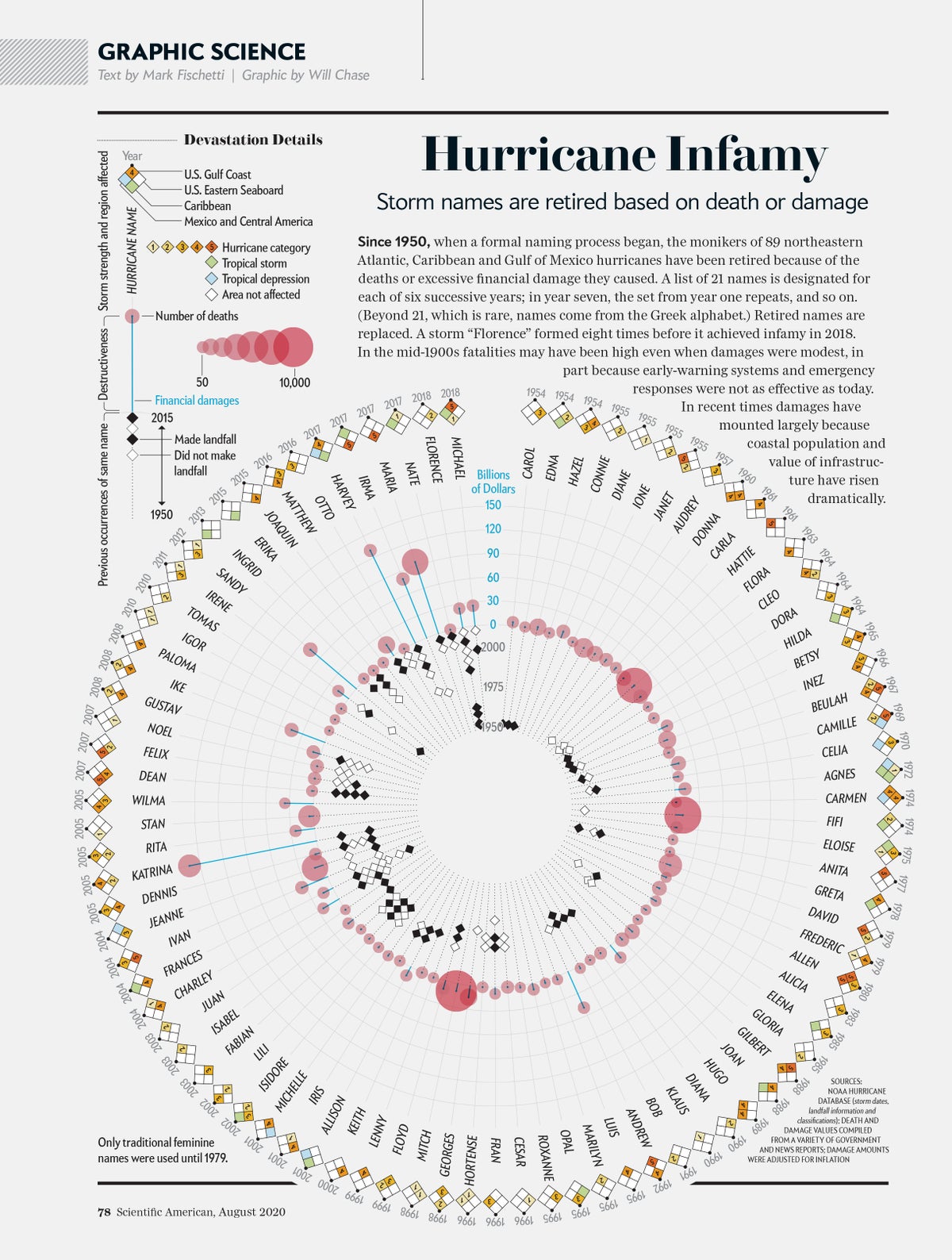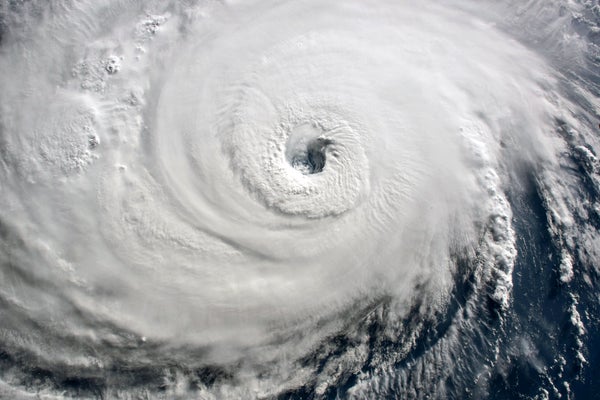On supporting science journalism
If you're enjoying this article, consider supporting our award-winning journalism by subscribing. By purchasing a subscription you are helping to ensure the future of impactful stories about the discoveries and ideas shaping our world today.
The World Meteorological Organization (WMO) announced last week that it will no longer use the names of Greek letters for hurricanes. Each year the WMO follows a list of 21 names for Atlantic hurricanes. Previously, when more storms arose, it would then apply letters in the Greek alphabet. The WMO says that strategy caused confusion and distraction in 2020, when there were a record 30 Atlantic storms. From now on, it will publish a supplemental list of appellations to draw on. This year the added Atlantic names include Deshawn, Orlanda and Viviana. The organization also retires the names of particularly deadly or destructive storms: those from the 2020 season are Laura, Eta and Iota, and Dorian is a late addition from 2019.All 89 previously retired names are shown in a Graphic Science column we published last summer (below).

Credit: Will Chase; Sources: NOAA hurricane database (storm dates, landfall information and classifications); Death and damage values compiled from a variety of government and news reports; Damage amounts were adjusted for inflation
